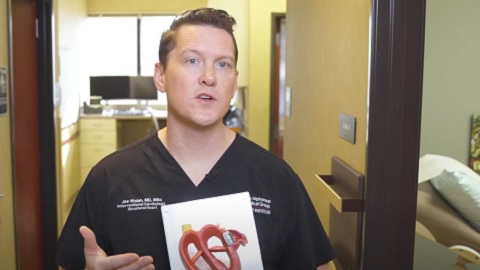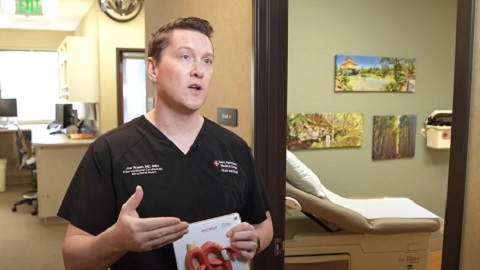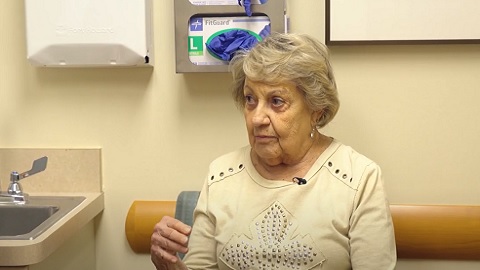Left Atrial Appendage Closure
A One-Time Implant that helps Reduce Stroke Risk
The Left Atrial Appendage Closure (LAAC) procedure is a one-time minimally invasive procedure aimed at reducing the risk of stroke in patients with atrial fibrillation (AFib) who would like to get off their blood thinner. While blood thinners like Eliquis® and warfarin are effective for reducing the risk of stroke in patients with atrial fibrillation they can also come at high cost in terms of major bleeding and complications from trauma, such as falls, gastrointestinal bleeding, etc. The LAAC procedure is a targeted approach to fix the problem of stroke caused by Afib, at the left atrial appendage where they originate. The left atrial appendage is a blind pouch in the top chamber of the heart where blood clots can collect in those patients with atrial fibrillation. Clots can potentially travel to the arteries of the brain and cause a stroke. Instead of subjecting your body to the adverse effects of being on a strong blood thinner the LAAC procedure blocks the appendage area where the clots most likely occur without altering the function of the heart.
The LAAC procedure takes roughly 15 minutes and is performed through a small catheter inserted through the vein of the leg. Patients who are candidates for LAAC using the WATCHMAN or Amulet™ device must have non-valvular atrial fibrillation and be at certain risk for stroke. Patients are usually discharged the same day from the hospital and often safely discontinue their blood thinner 90 days after the procedure when the follow up imaging is done, the device has healed and your doctor confirm results.
In 2023, of the 167 Left Atrial Appendage Closure procedures (WATCHMAN™ & Amulet™) performed, the Saint Alphonsus Structural Heart Team had a 0% complication rate.
Take our assessment to determine if you are a candidate for LAAC.
How Does AFib Increase Stroke Risk?
The average person with atrial fibrillation (also called AFib or AF) is five times more likely to have a stroke than someone with a regular heartbeat. That’s because AFib can decrease the heart’s pumping capacity by as much as 30%. When blood isn’t pumped out of the heart normally, it’s easier for blood cells to stick together and form clots in the left atrial appendage (LAA). When a blood clot escapes from the LAA and travels to another part of the body, it can cut off the blood supply to the brain, causing a stroke.
In people with atrial fibrillation not caused by heart valve problems (the most common type of AFib), more than 90% of stroke-causing clots that come from the heart are formed in the LAA.
Learn more about atrial fibrillation and stroke risk.
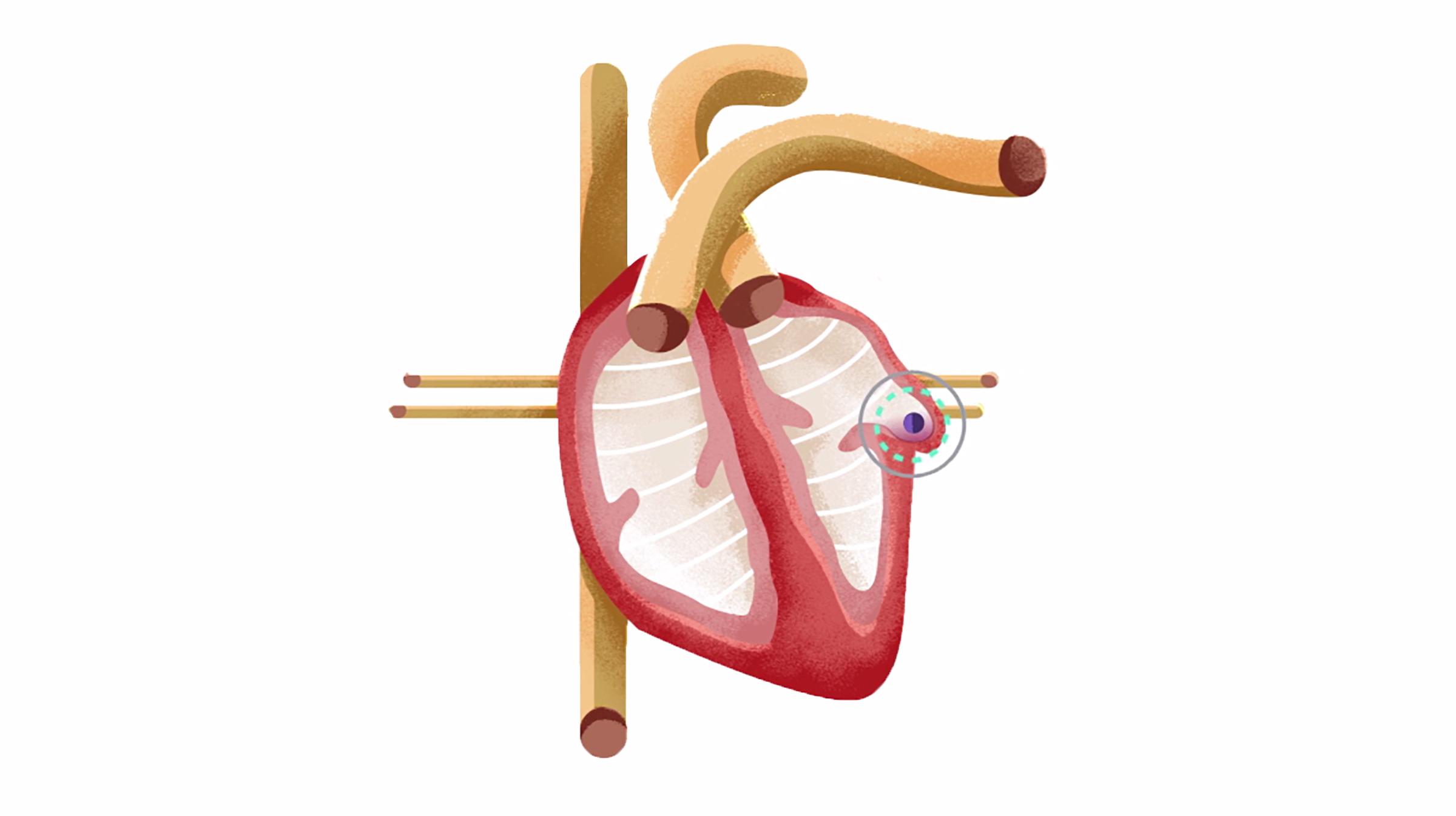
More than 90% of stroke-causing clots that come from the heart are formed in the LAA.

Reducing Afib Stroke Risk
Blood thinners, also called anticoagulants, are an effective way to lower the risk of stroke in people with atrial fibrillation not caused by heart valve problems. Common blood thinners include warfarin (also known as Coumadin®), Eliquis®, Pradaxa®, Xarelto® and Savaysa®.
Some people need an alternative to blood thinners, because they can increase the risk of bleeding. In some instances, bleeding events can be minor and easily treated, like a cut taking longer than normal to stop bleeding. In other cases, the bleeding can be life-threatening, such as when bleeding in the brain causes a stroke.
If you have a history of bleeding or a lifestyle, occupation or condition that puts you at risk for bleeding, your doctor may consider an alternative to blood thinners, such as the WATCHMAN™ or Amulet™ Implant.
In people with AFib not caused by a heart valve problem, more than 90% of stroke-causing clots that come from the heart are formed in the LAA. That’s why closing off this part of the heart is an effective way to reduce stroke risk.
The implant fits right into your LAA. It’s designed to permanently close it off and keep those blood clots from escaping without impeding the function of your heart.
Science always looks for ways to make effective treatments even better. LAAC is no exception. The design is an advancement that enables the implant to fit a greater number of patients, giving more people than ever a safe, effective alternative to blood thinners should they need one.
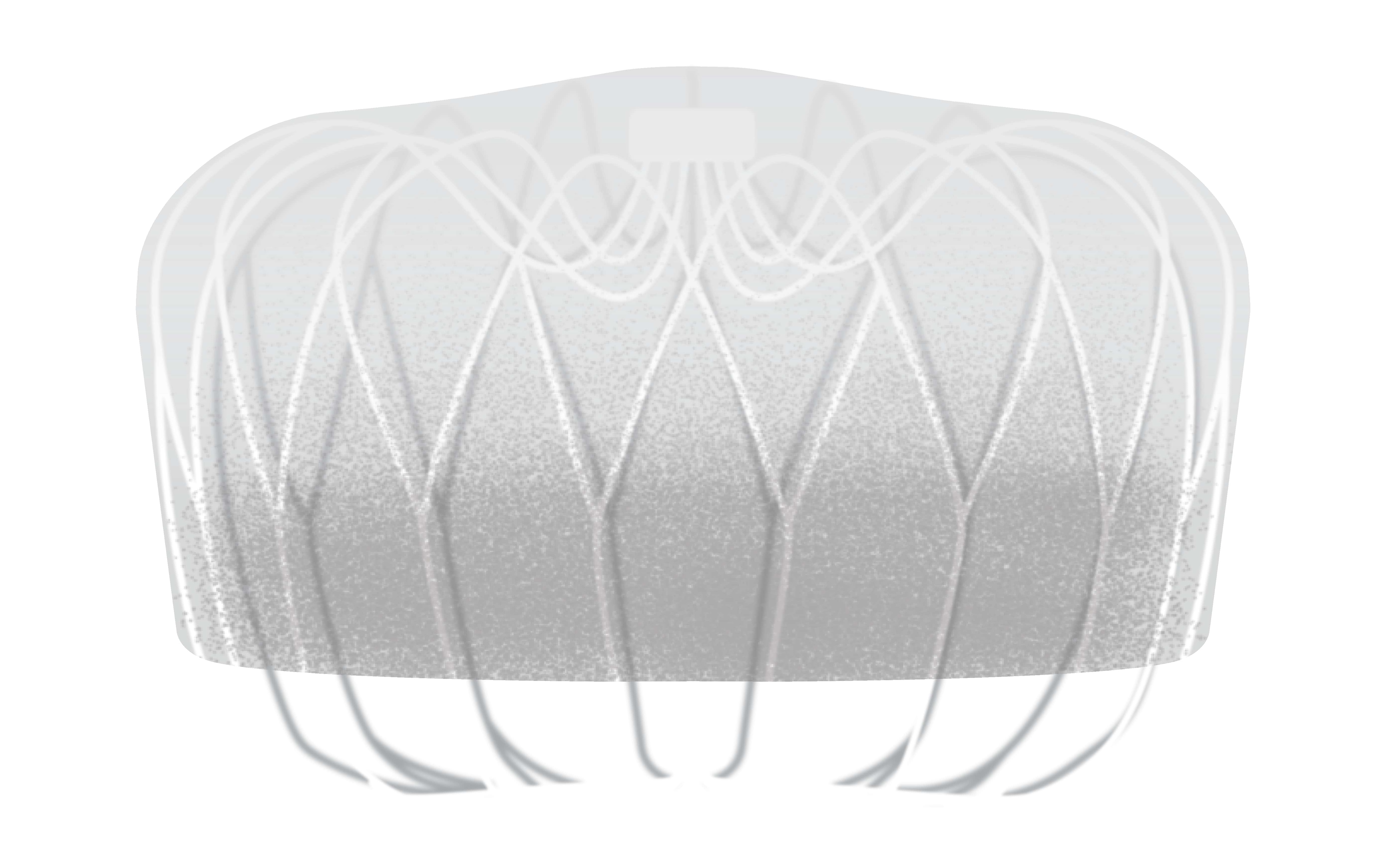
The WATCHMAN Implant is about the size of a quarter and made from very light and compact materials commonly used in many medical implants.
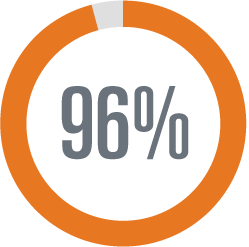
Following the procedure, heart tissue will grow over the implant to form a barrier against blood clots. Your doctor will monitor this process by taking pictures of your heart 90 days after your procedure to determine when you can stop taking your blood thinner medication. Once the device is healed, imaging is confirmed and you are advised to stop your anticoagulant, you will continue to take aspirin on an ongoing basis. A very small number of patients may need to keep taking blood thinners long term.
Learn More About Left Atrial Appendage Closure & Watch Sharon's LAAC Story
What is Left Atrial Appendage Closure?
